Alessandro Sartori: Fueling a Passion for Vintage Cars
- Oops!Something went wrong.Please try again later.
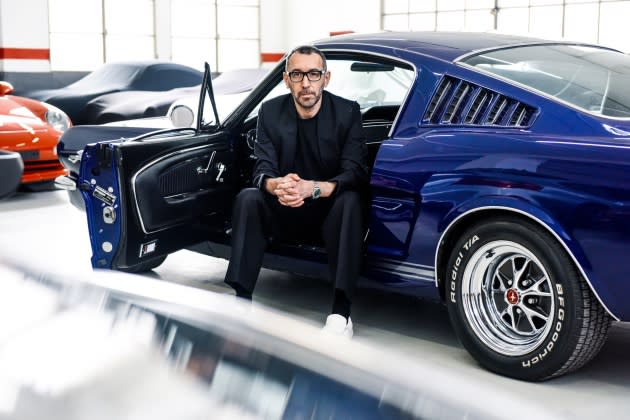
Meeting a fashion designer in a garage for an interview is not something that happens every day.
This garage in particular, however, has a special meaning for Alessandro Sartori, artistic director of the Zegna brand, as it is a personal investment that stems from his passion for vintage cars.
More from WWD
Nor is Milano Garage your average parking lot. Spotless, with gleaming white walls, it stores classic designs and also luxury modern ones. Sartori calls it a “hotel for cars.”
Five of them are his own, fondly bought and restored over the years.
Sartori’s interest in classic cars isn’t a recent one, as it dates back to his childhood and merges with his other two main passions, which are related to his day job, he underscores — design and photography.
“Since I was a child, I was passionate about the aesthetic lines of French cars from the ‘70s and ‘80s such as the Citroen DS 23 Pallas, or the Lancia Delta S4, and my father indulged me, buying me models and taking me to exhibitions. I remember one showcasing cars owned by [the late Fiat tycoon] Gianni Agnelli in Turin, for example,” recalls Sartori. “I wasn’t attracted to or impressed by expensive or necessarily famous or trendy cars but by a particular and unique design, and I would photograph them and learn about the designers behind them.”
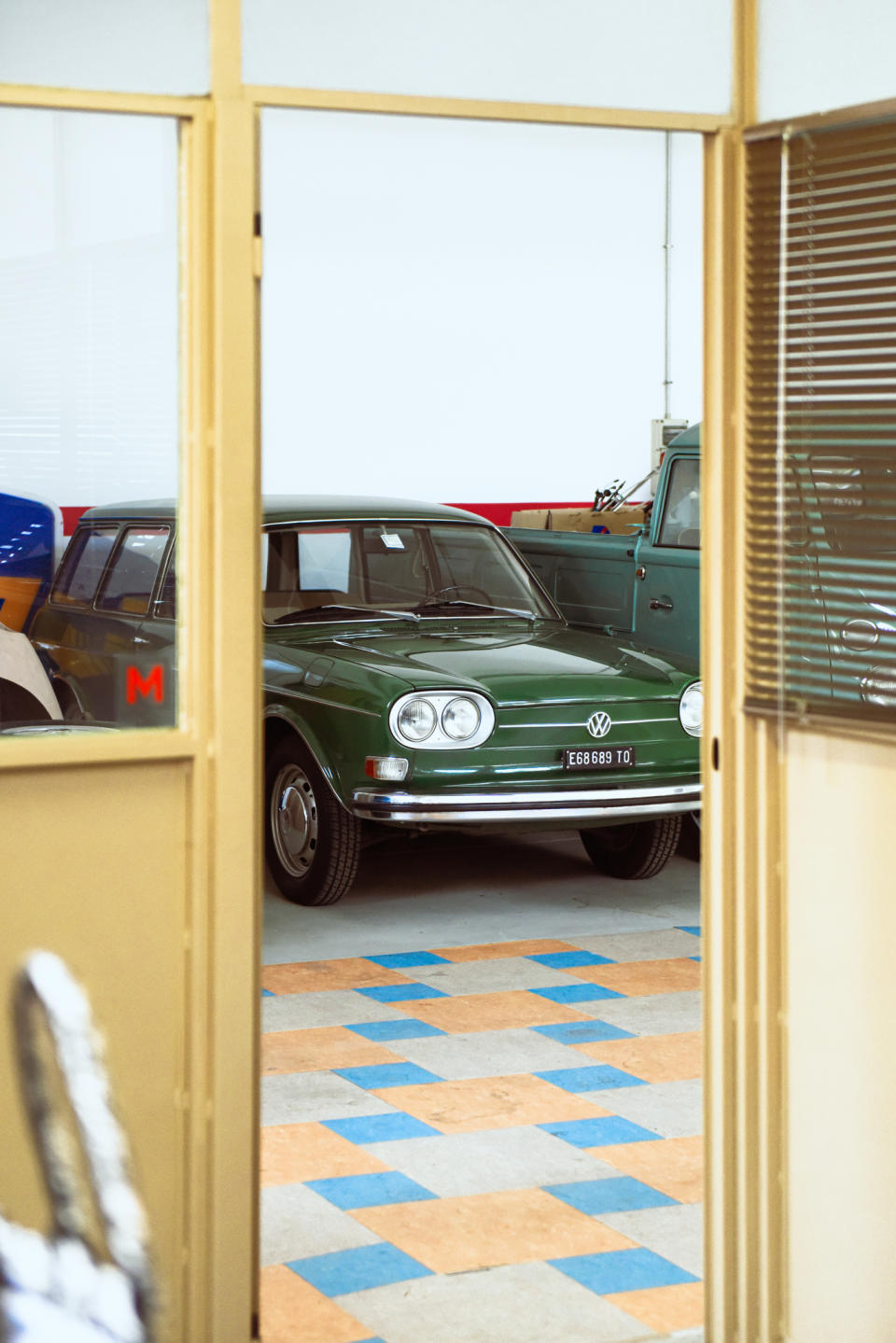
He points to the opportunity to meet American designer Frank Stephenson, who revisited the Mini Cooper in 2001, as a highlight.
When his busy schedule allows it, traveling to the Concours d’Elegance in Pebble Beach, California, or at Villa D’Este in Lake Como, Italy, or to the Monte Carlo Rally, are also personal moments he relishes.
He speaks affectionately of his first vintage car, a blue Ford Mustang Fastback 289 from 1965, that he acquired in 2011. He sought that particular car because he had the precise model when he was a child, he says.
What is fundamental, he explains, is that the car must be original. This doesn’t mean it has to be in mint condition when he buys it. Case in point: the now-gleaming and perfect orange Porsche Targa 911 dating back to 1972, his fourth purchase.
“I was looking precisely for that specific color and model, but it was in need of a total restoration, which took four years,” says Sartori. “I bought the original fabrics and leather for the interiors.”
It’s obvious that, apart from the aesthetic significance, the technical and cultural implications are embedded in his admiration for these vintage cars.
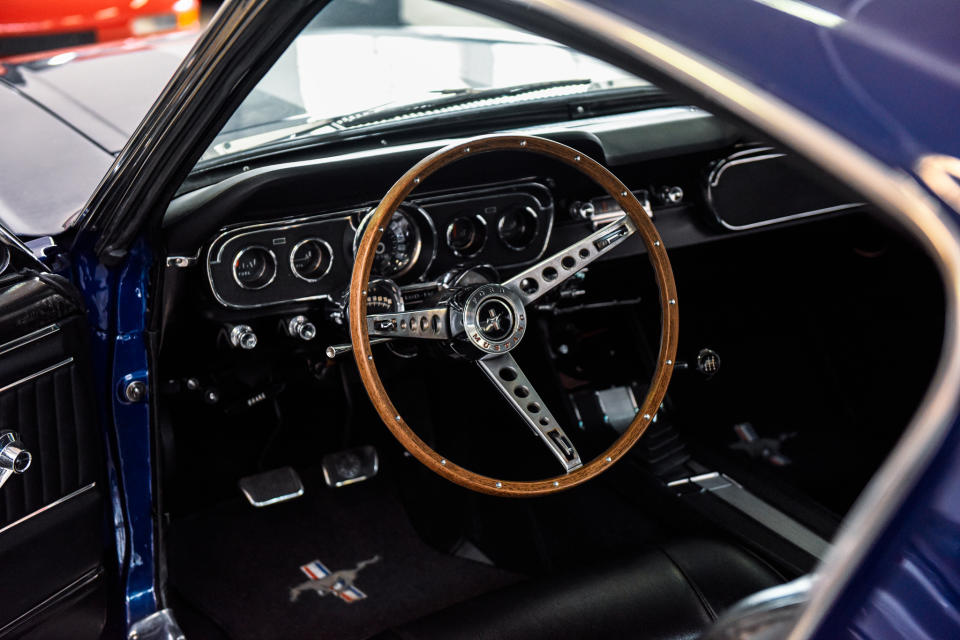
Sartori’s attention to detail isn’t surprising, given his meticulous approach to his fashion designs. He’s been acknowledged for leading the major style shift and commercial success of the Zegna brand.
The connection with Zegna runs deep. Sartori began his career at the Italian group in 1989 as a menswear designer and became creative director of the Z Zegna line in 2003. In 2011, he was appointed artistic director at Berluti in Paris and left five years later to rejoin Zegna in his current role.
At Zegna, to respond to the need for more comfort while staying stylish, he introduced a new form of the suit, developing his personal take on menswear and a signature style. He continues to experiment with light shapes, materials and technical finishes, developing a new leisurewear silhouette and subverting under and outer layers.
Before the Porsche Targa, he bought the red 1972 Lancia Fulvia HF Fanalone, or “big headlamps” due to its oversized headlights. “Buying it was my dream come true,” he says, his eyes twinkling.
His second buy was a bronze Porsche Turbo from 1981 that he bought in 2014 in Memphis. “I like the idea that the [Porsches] are tweaked with slight changes through the years while maintaining their original design — it’s genius,” he says of his other Porsche, the 911 T. Which leads him to see some similarities with menswear, when variations on some staples evolve through the collections and make the difference.
Driving these cars is also part of the fun, as Sartori would never consider keeping them locked up as in a museum. He shows photos of a trip through France, and recalls fondly of driving up to the Swiss lakes or the Dolomites.
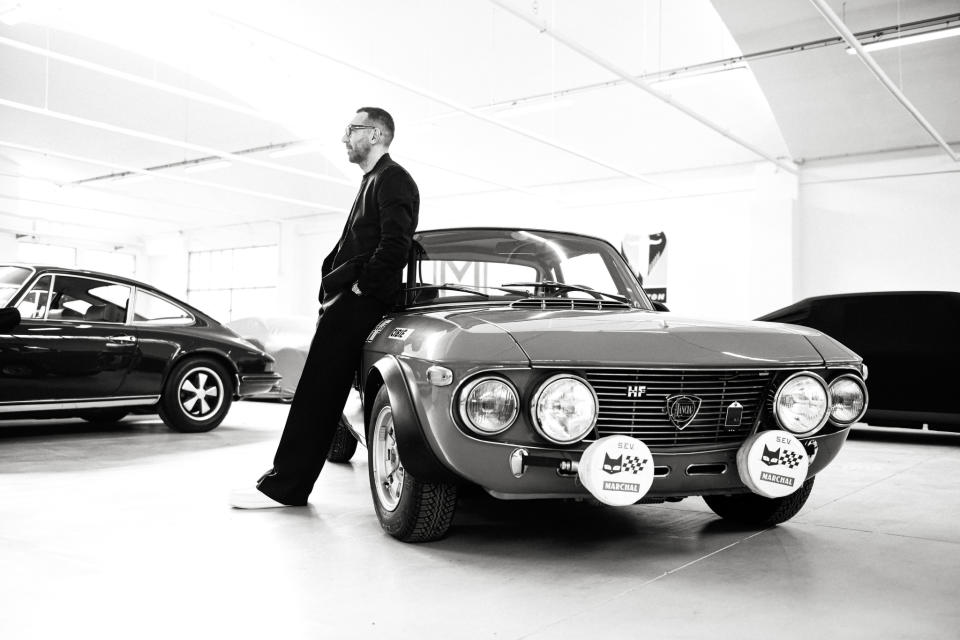
That said, he realized years ago the need to protect the cars and with a partner, Riccardo Tosi, he set up Milano Garage in 2015.
“I used to pay a monthly rent for the Mustang in a garage where nobody would take care of the car, and I thought this made no sense at all, so with Riccardo we decided to find a location where we would ensure the cars would be cleaned, covered, parked away in the right temperature in summer and winter, and insured,” says Sartori.
Gradually, and by word of mouth, Milano Garage began to open up to others. “We also take care of transferring the cars to the exhibitions, take photos there, and, in brief, respond to the needs of our clients,” says Sartori. “There really isn’t anything similar in Italy, it’s a new concept here.”
In lateral projects, Sartori has had the opportunity to work with Maserati on Zegna capsule collections and create interiors for the luxury cars.
His next dream car? “Ah, I would love to buy a black Ferrari Dino,” he says wistfully.
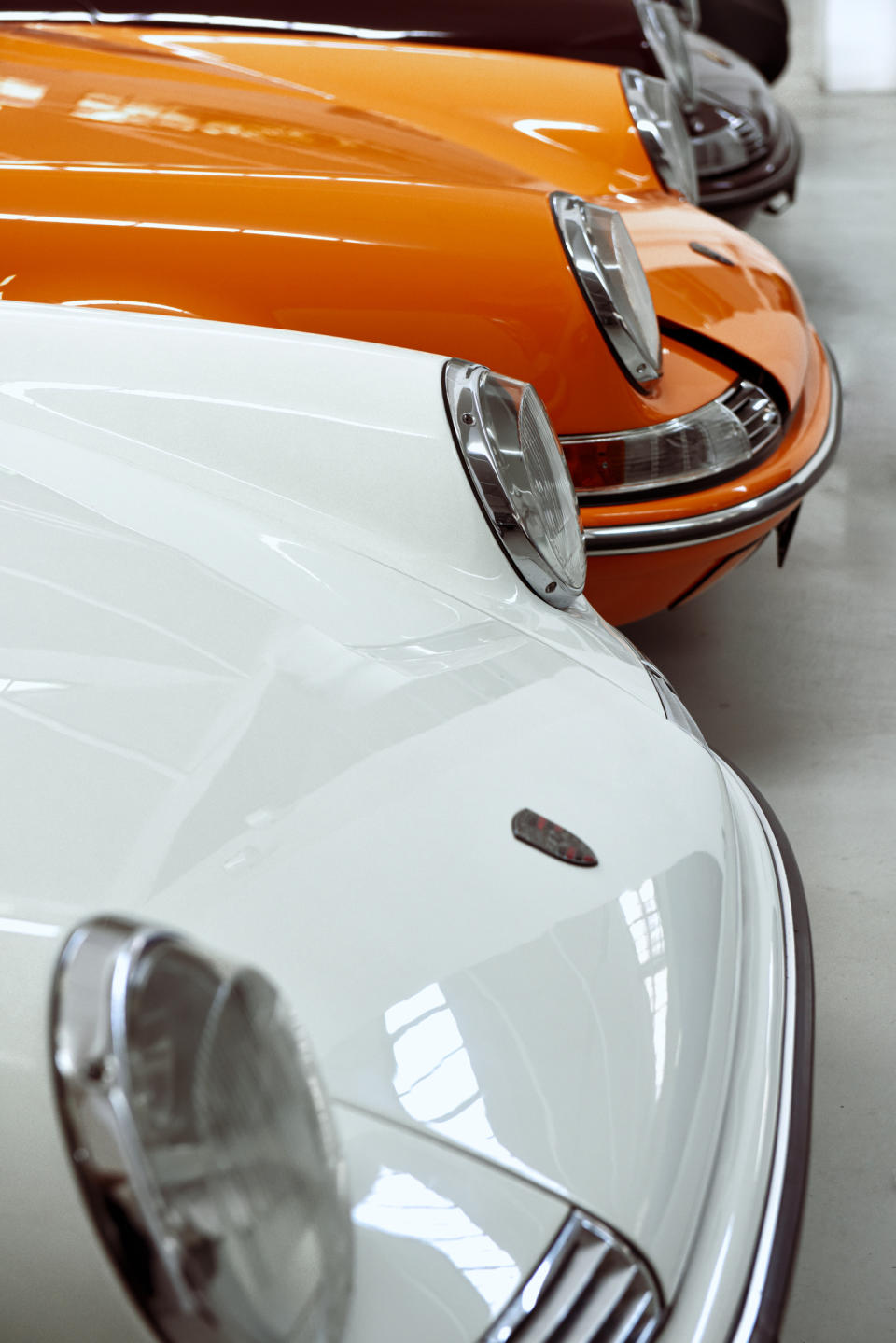
Best of WWD

